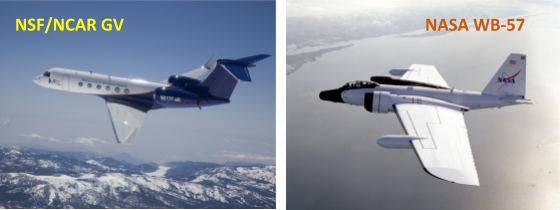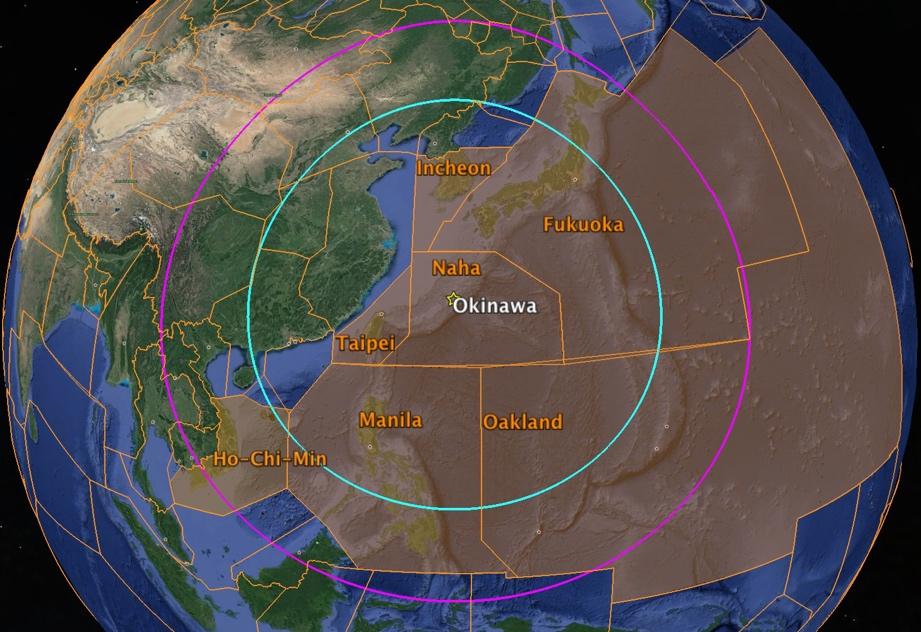Asian Summer Monsoon Chemical and Climate Impact Project (ACCLIP)
The Asian Summer Monsoon (ASM) impacts the lives of billions of people through the variability of precipitation pattern and intensity. Along with this major weather phenomenon is a significant chemical transport pattern that couples surface emissions of the South, Southeast, and East Asia to global climate and air quality. The large anticyclonic flow pattern in the upper troposphere and lower stratosphere (UTLS) associated with the ASM is a dominant circulation feature of the summer season for the entire Northern Hemisphere (NH). The coupling of the most polluted boundary layer on Earth to the largest UTLS dynamical system in the NH summer season through deep monsoon convection has the potential to generate significant chemical and climate impacts. The behavior of ASM as a transport pathway, the chemical content in the UTLS outflow of the ASM air mass, the amount and the properties of UTLS aerosols associated with the ASM, and the stratospheric water vapor enhancement due to the ASM are among the key elements for understanding and quantifying the chemistry and climate impact of the ASM.
The feasibility of an airborne study of ASM UTLS impacts becomes clear from recent model analyses which show that the ASM anticyclone has significant UTLS outflow over the western Pacific. The outflow is associated with the sub-seasonal scale east-west oscillation of the anticyclone (Pan et al., 2016; Luo et al., 2018, Honomichl and Pan, to be submitted 2019). The opportunity to obtain measurements of the ASM outflow and its impacts has led to the planned airborne field campaign: the Asian summer monsoon Chemical and Climate Impact Project (ACCLIP). The project sponsored by the National Science Foundation (NSF) and NASA, will deploy the NSF/NCAR research aircraft Gulfstream V (GV), the NASA research aircraft WB-57, and balloon borne ground-based measurements of profiles of aerosol and water vapor to complement the airborne studies. The airborne field campaign is to be conducted from Japan during July 15-August 31, 2020. The GV payload includes measurement of O3, NO, NO2, CO, CO2, CH4, H2O, Black Carbon, SO2 (and others by CIMS), aerosol composition (MS), aerosol size distribution, organic trace gases, cloud particles, and thermal profiles (MTP). A similar payload is planned for the NASA WB-57.

References
Honomichl and Pan, Transport from the Asian Summer Monsoon anticyclone over the Western Pacific, to be submitted to JGR-Atmosphere.
Luo, J., Pan, L. L., Honomichl, S. B., Bergman, J. W., Randel, W. J., Francis, G., Clerbaux, C., George, M., Liu, X., and Tian, W.: Space–time variability in UTLS chemical distribution in the Asian summer monsoon viewed by limb and nadir satellite sensors, Atmos. Chem. Phys., 18, 12511-12530, https://doi.org/10.5194/acp-18-12511-2018, 2018.
Pan, L. L., S. B. Honomichl, D. E. Kinnison, M. Abalos, W. J. Randel, J. W. Bergman, and J. Bian (2016), Transport of Chemical Tracers from the Boundary Layer to Stratosphere Associated with the Dynamics of the Asian Summer Monsoon, J. Geophys. Res. Atmos., 121, 14,159–14,174, doi:10.1002/2016JD025616.
